Institut Charles Sadron Présentation
More than 75 years of macromolecular science in Strasbourg
Since the turn of the 20th century many synthetic polymers like bakelite, nylon, and glues (just to name a few) have been part of our daily life. In 1945, a scientist named Charles Sadron got interested in the world of macromolecules. and As a visionary physicist, he developed two main: first, an interdisciplinary approach to study these these kind of natural and synthetic polymers, which are at the interface between Chemistry, Physics and Biology; second, initiating a strong connection between academia and the emerging industry. In 1947, he supported the creation of the “Centre d’Études de la Physique des Macromolécules” – CEPM, the first CNRS laboratory outside Paris. Then in 1954, the laboratory became the “Centre de Recherche sur les Macromolécules” – CRM, directed by Charles Sadron and associated to the University of Strasbourg.
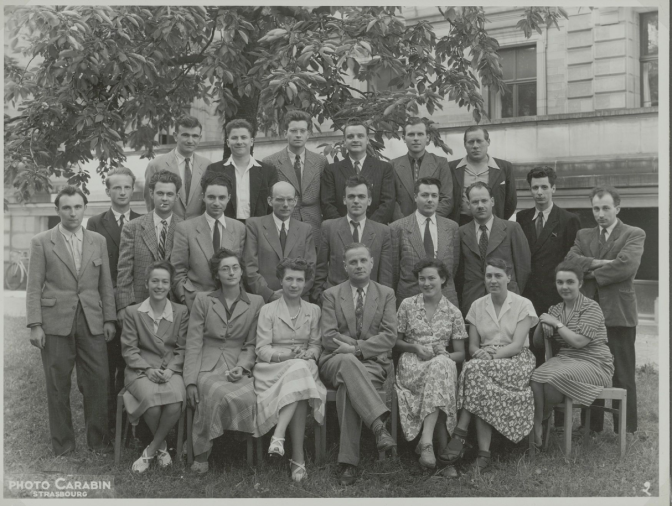
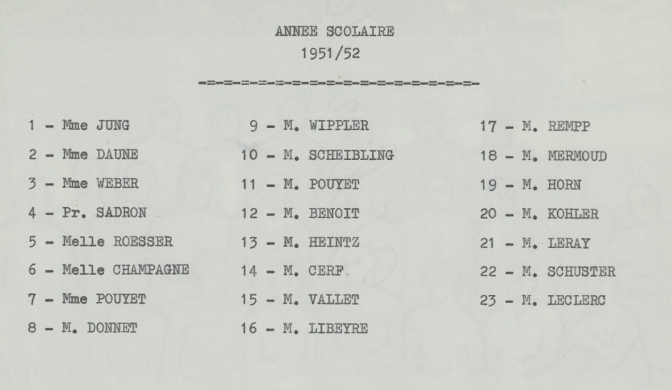
At that time, the absence of graduate school of applied sciences was
notable, then the project for the creation of a school driven by Charles
Sadron in 1961 with the department of higher education was accepted by a
decree in december 19th of 1963: “L’École d’application des hauts
polymers” (EAHP) is an institute of the faculty of science in
Strasbourg. It has as aim the formation of engineers specialised in the field of high molecular weight polymers. It was
in 1985 that the laboratory was named Institut Charles Sadron (ICS) as a
tribute to its creator and since 2008, the institute has been located at the
CNRS campus in Cronenbourg.
Institut Charles Sadron: From the beginning to nowadays- some key dates
1946 : Charles Sadron was the first laurate of the Holweck prize awarded by the British Physical Society, and during the same year, Strasbourg held the first colloquium about high molecular weight polymers. These two events were the starting point for the recognition in scientific activities in this research field.
1947 : Creation of the “Centre d’études de la physique des macromolécules” – CEPM by the CNRS and supported by Charles Sadron. This multidisciplinary centre brought together physicists, chemists and biologists and started research in macromolecular science. It was the first CNRS laboratory unit outside Paris, and it was located in the basement of the Institute of Physics.
1952 : The laboratory became the “Centre de recherches sur les Macromolécules” – CRM. The CNRS signs an association agreement with the University of Strasbourg.
1954 : Installation of the – Institute in a new building located on the Boussingault street. The inauguration took place in the presence of the German chemist Hermann Staudinger, Nobel Prize in Chemistry of 1953 for the discoveries in the field of macromolecular chemistry.

1957 : Visit of the President of the Republic René Coty at the “Centre de recherches sur les Macromolécules”, the 5th of July. To the right of the president, Charles Sadron.
" The decade 1953-1963 was that of the DNA double helix, protein crystallography, genetic code, and the arsenal of remarkable macromolecules such as messenger RNA, transfer RNA, ribosomes,..." (Vittorio Luzzati (researcher at CRM) in his book : « Une vie à raconter » H Diffusion, Collection Hd Temoignage, septembre 2011, EAN 9782363450067, ISBN 236345006). At the CRM, researchers were also interested in DNA polymers. The contributions of Colette and Roger Vendrely on first genetic animal experiments using DNA were recently reported in the interactive comic strip: L’affaire des Canards https://affaire-des-canards.unistra.fr/ (in french)
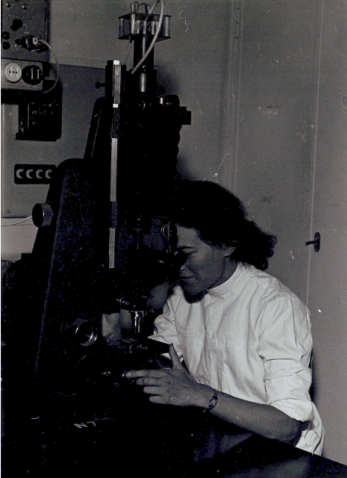
Picture of Colette Vendrely taken in the late ‘50s.
1967 : The centre has undergone an impressing development. During this year, when Charles Sadron left the direction to his collaborator and deputy, Henri Benoit; around 250 people were working in physics, chemistry and molecular biology.
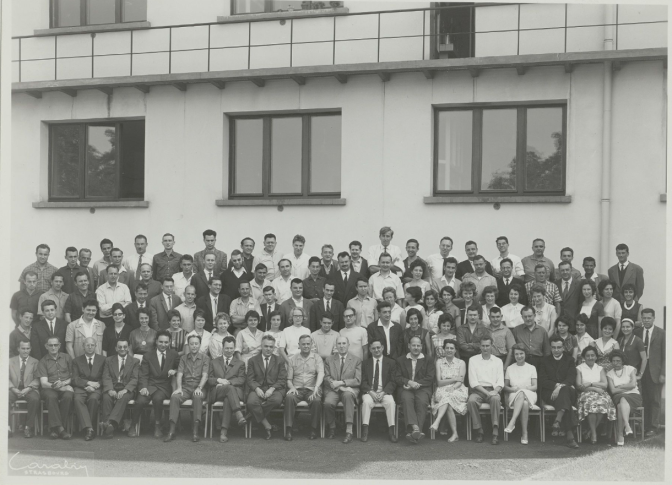
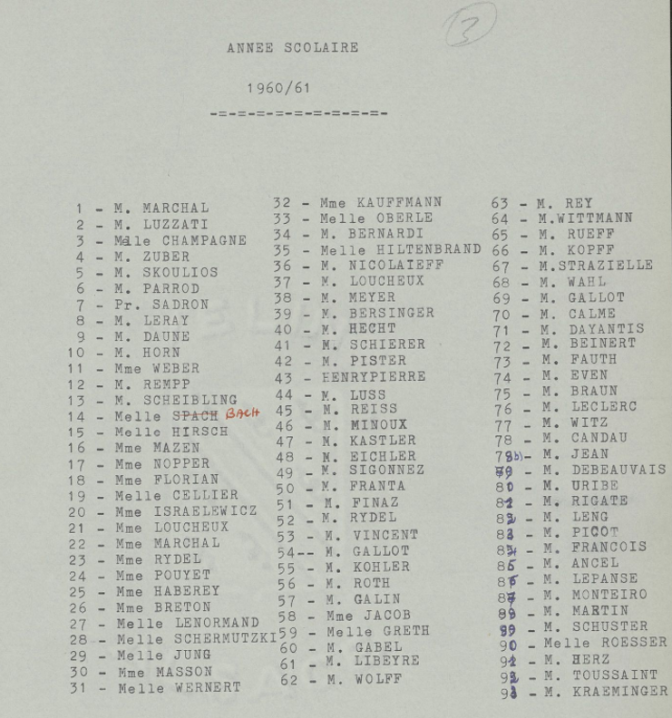
1970s : After the departure of the biologists with Charles Sadron to Orléans, the laboratory developed two main research axes: the study of the solid state of macromolecules and the study of their structure and behaviour in solution. The latter topic was boosted by the development of the neutron scattering. In these years, the collaboration Strasbourg - Saclay - Collège de France, STRASACOL, offered the opportunity to compare polymer scaling laws with small angle neutron scattering experiments (performed at the Léon Brillouin lab in Saclay or at the Institut Laue-Langevin in Grenoble ) on deuterated polymers synthesized at the CRM. After Henri Benoît (1967-1978), Constant Wippler (1978-1985) was appointed as the director of the CRM.
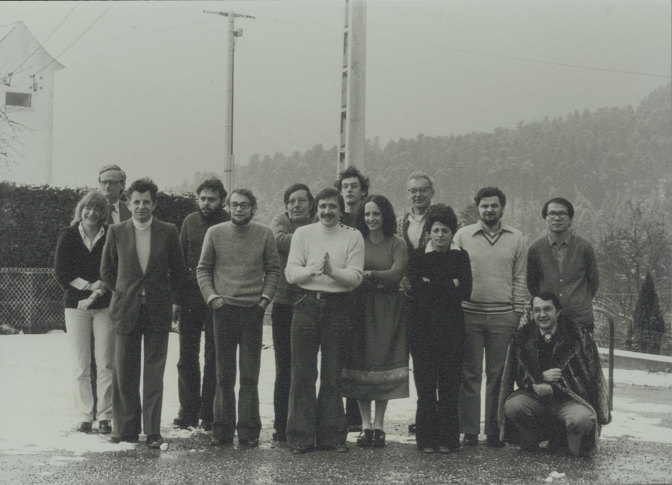
Picture of a STRASACOL meeting in the Vosges: Claudine Williams, Gerard
Jannink, Jacques Des Cloizeaux, Michel Delsanti, Jean-Pierre Cotton,
Claude Picot, Robert Duplessix, François Boué, Martine Nierlich, Robert
Ullmann, Mireille Adam, Jean-Michel Guenet, Yoshinobu Izumia, Bernard
Farnoux (not standing).
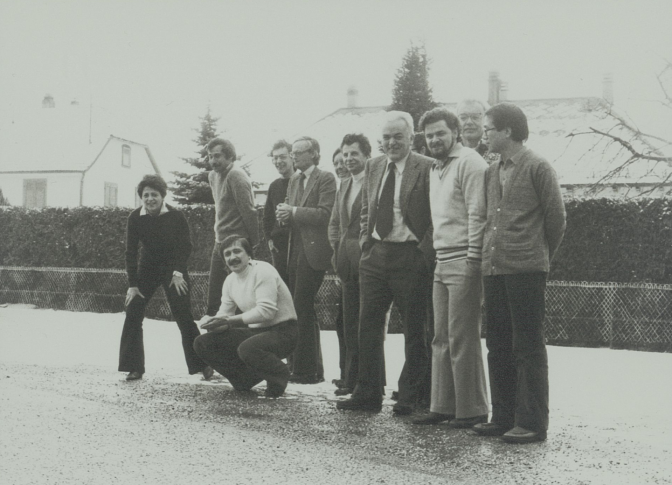
Picture of a STRASACOL meeting in the Vosges: Mohamed Daoud, François Boué, Gérard Jannink, Martine Nierlich, Claude Picot, Jacques Des Cloizeaux, Michel Delsanti, Jean-Pierre Cotton, Henri Benoit, Robert Ullmann, Jean-Michel Guenet, Yoshinobu Izumi, Mireille Adam, Robert Duplessix
In 1970 A.J. Kovacs (researcher at CRM) and G. Champetier founded the French Group for Polymer Studies and Applications (GFP), the French learned society dedicated to polymers. Its mission is to promote the development of polymers in higher education and research organizations, but also within the French industries. The headquarters was fixed at the CRM in Strasbourg.
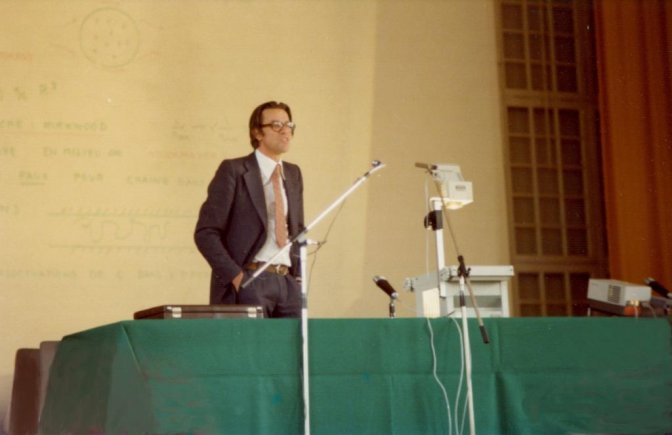
PG De Gennes for the 30th anniversary of the Institute (CRM)
1985 : In order to bring closer the fundamental and applied research, the research laboratories of the Ecole d’Application des Hauts Polymères (EAHP) were integrated to the CRM, that creates the Institut Charles Sadron (ICS). This evolution from the post-war to nowadays was studied by Françoise Olivier-Utard a CNRS historian: “Les conventions entre le CNRS et l’université de Strasbourg : une expérience pionnière” https://journals.openedition.org/histoire-cnrs/691 (in french).
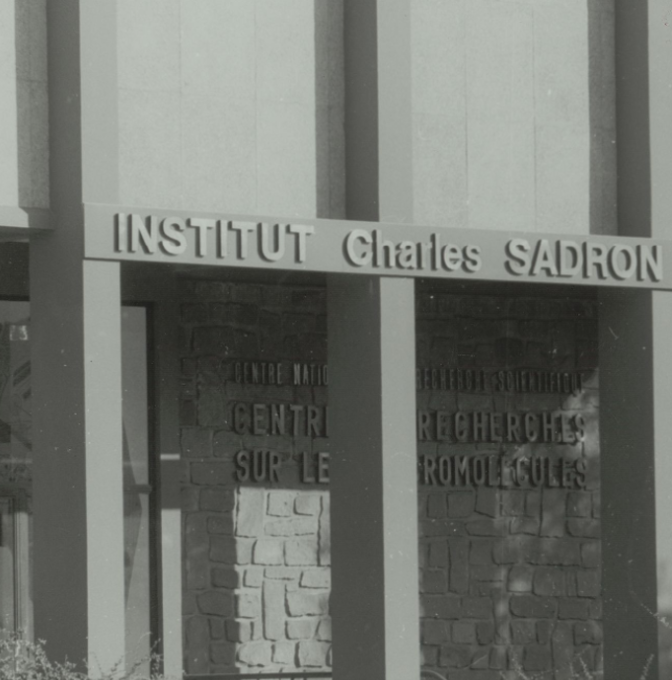
1985-1995: In these time period, the ICS made key contributions in the following fields: polymer films, rheology of polymer blends and emulsions, polymer crystallisation, copolymer synthesis, amphiphilic systems, theory of associating polymers, polymer networks and gels. Within this period, the directors were Gilbert Weill (1985-1992) and Georg Maret (1992-1997).
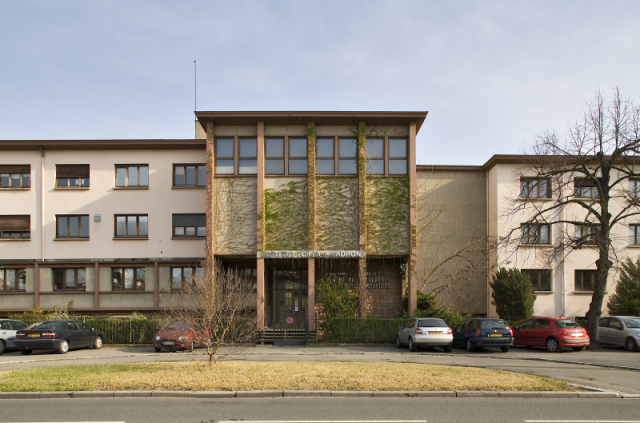
The building of ICS, Boussingault street.
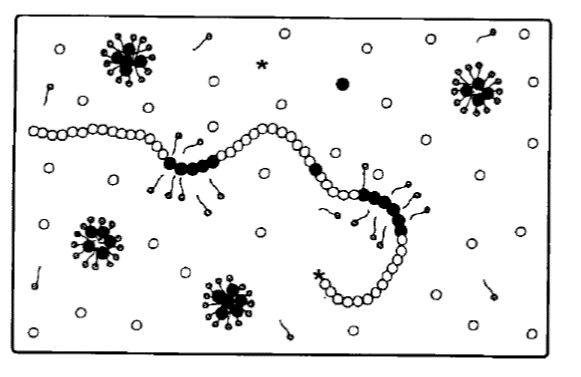
Scheme of micellar copolymerization from the 1992-1995 evaluation report
1996-2007: Research topics at the ICS become broader with important progresses in: Layer by Layer polyelectrolyte assemblies, theory of polyelectrolytes, polymorphism of polymers, gemini and fluorinated surfactants, rheology of 2D foams, physics of DNA, nanoparticles, carbon nanotubes and colloidal crystals. Jean-Claude Wittmann (1997-2005), Jean-François Legrand (2005-2012) were the ICS directors in these years.
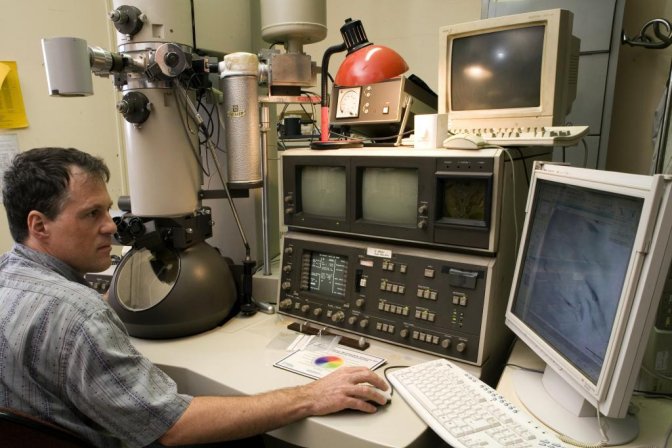
Marc Schmutz at the electron microscopy platform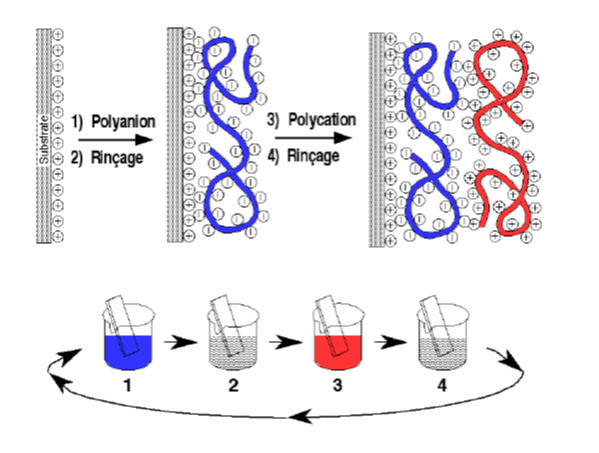
Scheme of Layer by Layer deposition from the 1995-2000 evaluation report
2008: Inauguration of the new buildings of the ICS on the CNRS campus in Cronenbourg.
This project, which is part of the ‘Strasbourg European city 2000-2002’
three year contract funded by local authorities (Strasbourg urban
community, department of Bas-Rhin, Alsace region) and the CNRS with a
participation of the ministry of higher education, research and
innovation.
The buildings are located near to the EPCM and to the Institut de
Physique et Chimie des Materiaux de Strasbourg (IPCMS) with which the
ICS is member of the Federation of Materials Research and Nanosciences
(FRMNGE).
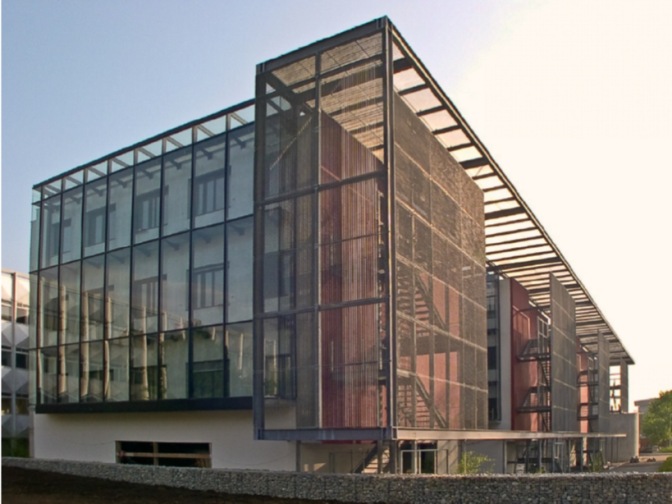
2008-2019: Recently, research at ICS focussed on: synthesis of sequence-controlled polymers, synthetic molecular motors, supramolecular self-assemblies, fluorinated molecules, hybrid multilayers, stimuli responsive polymers, semiconducting polymers, active polymer gels, giant lipid vesicles, foams, theory and simulations of polymer glass transition. Jean-Michel Guenet (2012-2016) and Christian Gauthier (2016-2023) were the ICS directors in this period.

Scheme of digitally coded sequence-controlled polymers from the 2011-2016 evaluation report
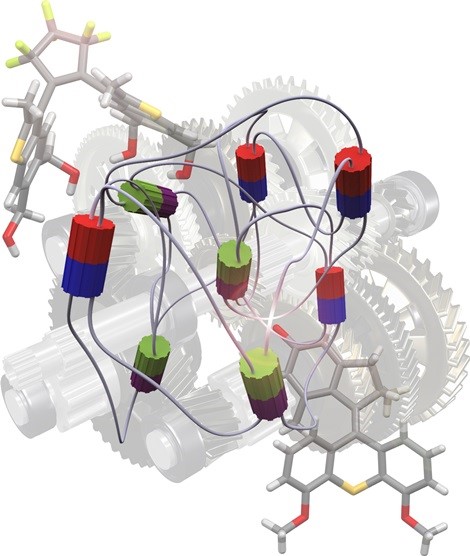
Artistic view of a synthetic molecular motor,© Gad Fuks / Nicolas Giuseppone / Mathieu Lejeune/ Woverwolf/Shutterstock.com
Some References
– Pictures taken from https://docnum.unistra.fr/digital/collection/p21057coll5
– Brahms, J., Sadron, C 1966. Ionic and hydrogen bond interactions contributing to conformational stability of polynucleotides. Nature 212, 1309-1312.
– Charles Sadron : un remarquable scientifique du 20e siècle par Michel Monsignyhttp://www.lacado.fr/files/14-Sadron-Texte-Tours-3-juin-r.pdf
– Enzymatic Degradation of Deoxyribonucleic Acid into Sub-units -Giorgio Bernardi, Madeleine Champagne & Charles Sadron - Nature volume 188, pages228–229 (1960)
– Book « Polymers and Neutron Scattering » by J. S. Higgins and H. C. Benoît (Oxford University Press)
– Interview with PG De Gennes on STRASACOL « Entretien avec Pierre-Gilles De Gennes », par Bernadette
Bensaude-Vincent et Hervé Arribart, 2 mai 2002, Sciences : histoire
orale https://www.sho.espci.fr/spip.php?article59
https://www.cairn.info/pierre-gilles-de-gennes--9782701152288-page-271.htm
– Stracasol: A joint french effort on the physics of flexible chains, P. G. de Gennes, Journal of Polymer Science: Polymer Letters Edition Volume 15, Issue 10, Pages: 623-628, (1977)
– An electron microscope study of different samples of DNA, Roger Vendrely, Colette Vendrely, Charles Sadron
– Experimental Cell Research, 1958; The results of cytophotometry in the study of the deoxyribonucleic acid (DNA) content of the nucleus, Roger Vendrely, Colette Vendrely - International Review of Cytology, 1956 - Elsevier
– Vittorio Luzzati, Françoise Reiss-Husson The structure of the liquid-crystalline phases of lipid-water systems J Cell Biol 1962 Feb;12(2):207-19.doi: 10.1083/jcb.12.2.207
– PhD of Françoise Reiss-Husson https://inis.iaea.org/collection/NCLCollectionStore/_Public/53/049/53049276.pdf
– Le laboratoire au coeur de la reconstruction des sciences en France 1945-1965 Formes d’organisation et conceptions de la science - François Jacq
– Les conventions entre le CNRS et l’université de Strasbourg : une expérience pionnière - Françoise Olivier-Utard
– Structure, Dynamics, Interactions and Evolution of Biological Macromolecules: Proceedings of a Colloquium held at Orléans France on July 5–9, 1982 to Celebrate the 80th Birthday of Professor Charles Sadron https://books.google.fr/books/about/Structure_Dynamics_Interactions_and_Evol.html?hl=it&id=qqLsCAAAQBAJ&redir_esc=y#v=onepage&q&f=false
– Institut Charles Sadron : rapport d’activité
https://hal-lara.archives-ouvertes.fr/search/index?q=Institut+Charles+Sadron
Charles Sadron
Charles Sadron was born in the Berry the 12th of May of 1902. When he was 24 years old, he got his bachelor in physics by the University of Poitiers and after he became a teacher in Troyes, he joined to the Lycée Kléber in Strasbourg in 1928. In parallel to his teaching activities, he undertook a research activity and he started his PhD studies in the ferromagnetic moments of the metals in the laboratory of Pierre Weiss at the Institute of Physics at the University of Strasbourg.
When
he was 30 years old he got his PhD title in the field of magnetism and
he also got a fellowship from the Rockfeller Foundation. He spent one
and a half year at the California Institute of Technology (Caltech) with
the Professor von Karman where he could work in
the field of fluid mechanics. For that time, going abroad thanks to a
private fellowship for pursuing a research work it was really innovative
and just few French physicists searched for a complementar formation
abroad. Then, Charles Sadron appreciated the operating model of the
north american laboratories and how to work with great resources in
colaboration with the industry. It was due to this life experience that
Charles Sadron developed in France his own view of the research based on
the interdisciplinarity and the collaboration between science and industry.
In 1934, when he went back to France he got interested in the synthesis of polymers as well as in biological macromolecules. Once France took part in the world war in 1939, the faculty of Strasbourg was moved to Clermont-Ferrand and Charles Sadron installed his lab in this city to pursue his projects on the determination of the mass, dimension and structure of certain macromolecules. These works were interrupted in November of 1943 when he was arrested by the Gestapo and deported to Germany, to Buchenwald and then to Dora-Mittelbau where he remained until the spring of 1945.
In 1945, back to Strasbourg, Charles Sadron became Chair of general Physics at the University of Strasbourg and he started working on the creation of a laboratory dedicated to macromolecules, always with is vision on interdisciplinarity and the collaboration between science and industry. The Centre de Recherche des Macromolécules (CRM) was inaugurated in 1947, and he was the director until 1967.
From 1961 to 1975, he was the first holder of the chair in Biophysics at the National Museum of Natural History in Paris. In 1967, he took the direction of the Centre of Molecular Biophysics of the CNRS campus in Orleans. In 1974, Claude Hélène, one of his students was his successor.
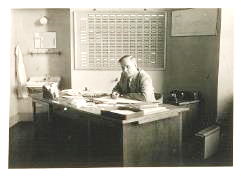
Charles Sadron at his office.
Charles Sadron was a pionner: he understood the relevance of the
interdisciplinar cooperation as well as the importance of opening up to
the bussiness. Two innovative reasoning by the time.
Charles Sadron had a major influence in the development of a new discipline: the biophysics of macromolecules. His impact on this science was emphasized in particular by Pierre-Gilles de Gennes, when he received the Nobel Prize in Physics in 1991.
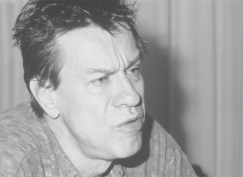
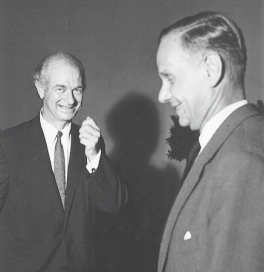
(To the left) Pierre-Gilles de Gennes. (To the right)
Charles Sadron with the north american chemist and physicist Linus
Pauling (1901 - 1994), winner of the Nobel Prize in Chemistry in 1954
for his work describing the nature of the chemical bond, and the Nobel
Prize in Peace in 1962 for his fight against nuclear tests.
Extrait de 2 minutes de l’original auprès de l’INA
Source INA :https://www.ina.fr/video/CAF97059039/charles-sadron-les-macromolecules-video.html
Interview with the Professor Charles SADRON, director of the Institute
of Macromolecular Research of Strasbourg accompained of his collaborater
Dr. Pierre DOUZOU. Charles SADRON talks about the characteristics of
macromolecules showing that the complexity of these large molecules
allows them diverse chemical functions. These substances are the base of
the modern chemical industry (plastics, artificial fibers, etc...).
Pierre DOUZOU talks about the semiconductor polymers.
Extrait de 2 minutes de l’original auprès de l’INA
Source INA :https://www.ina.fr/video/I05174368/charles-sadron-devenir-maitre-de-l-evolution-des-etres-vivants-video.html
Interview of Professor Charles SADRON, biophysicist. According to him, humanity is on the eve, not longer to observe life, but to act on living matter in such a way that the living world can be at its mercy. He thinks that scientist have the responsability to do scientific outreach for being understood by everyone.